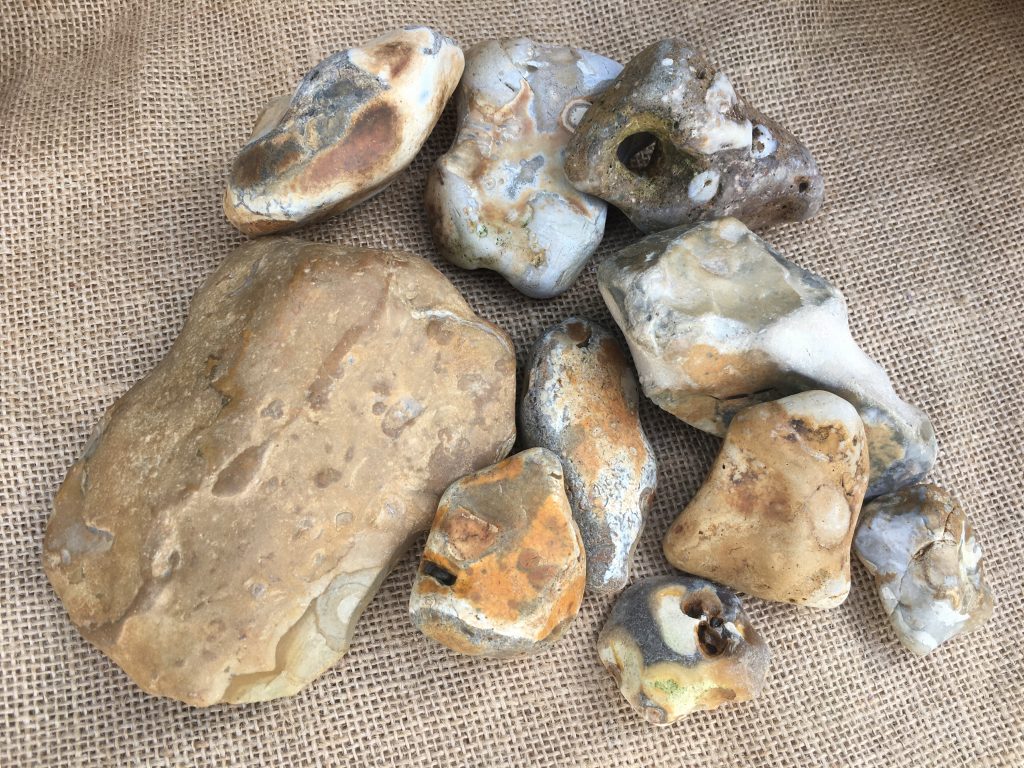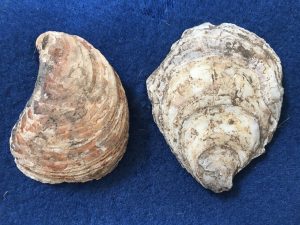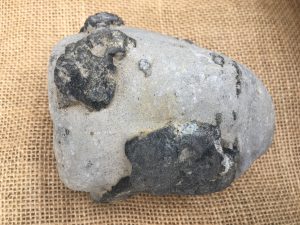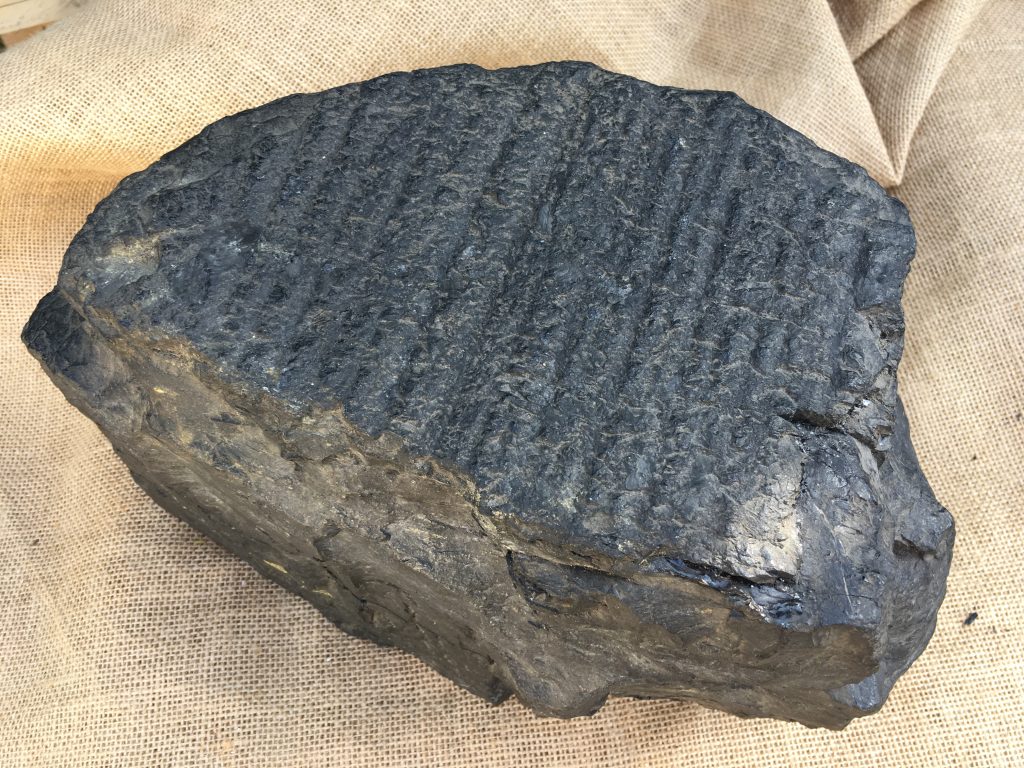
Chalk is a sedimentary rock which formed on an ancient seabed around 75 million years ago in the Cretaceous Period. It is mainly composed of the accumulated fossilised remains of micro-organisms known as coccolithophores. These are a type of phytoplankton which secrete a calcium-rich protective shell made up of around 30 separate connected plates known as coccoliths, each of which is a mere 3 one-thousands of a millimetre in diameter. Pretty small for sure! Incalculable numbers of these minuscule shells rained down onto the seabed and were subsequently compressed, compacted and cemented together over millions of years to form the distinctive white coloured rock, the name for which derives from the Latin word ‘creta’ meaning simply ‘chalk’.


The famous White Cliffs of Dover in England are composed of it. This rock once covered most of the island of Ireland but, through the combined processes of weathering and erosion over millions of years, has been stripped away. Mainly only surviving in Co. Antrim, where it is covered by a protective layer of basalt, it is visible as a thick white band along the coast. Flint occurs as irregularly shaped nodules in the chalk and, fracturing into flakes when struck with a hammerstone, was an ideal material from which prehistoric people fashioned everyday tools and weapons. It is a type of quartz


The only sizable exposed in-situ source for flint in Ireland is in Co. Antrim. However, during the last Ice Age an extensive ice sheet filled the Irish Sea basin and, as it moved southward, bulldozed the sediments and underlying rock layers on the seabed. This material was later deposited by the melting ice as boulder clay on land, since which time large quantities of flint nodules have been eroded out and are now incorporated in the shingle on beaches along our eastern seaboard. The same boulder clay contains marine shells, including oyster (Ostrea edulis), which are certainly tens of thousands of years old. The art of flaking flint is known as ‘knapping’ and the resultant flakes were retouched by craftsmen who produced a range of items including knife blades, scrapers and projectile points. The consummate skill of one of our Neolithic forebears is readily apparent from this arrowhead which dates to sometime around 5,000 years ago.

The earliest evidence to date for the use of flint in Ireland comes in the guise of cut marks on the front surface of a brown bear’s kneecap which has been dated to 10,500 BC. Inflicted by a flint blade when the carcass of the bear was being butchered, the marks were originally noted in 1903 by the team who excavated the ancient deposits in a cave near Ennis, Co. Clare. It was found along with thousands of other animal bone fragments. This makes the butchered kneecap the earliest definitive evidence for the presence of humans in Ireland, the only other explanation being that it belonged to a self-butchering bear!

Chert is almost chemically identical to flint and was also used as raw material for making tools and weapons in our prehistoric past. Mesolithic hunter-gathers established a temporary camp on the shores of what was a shallow inland lake 8,500 years ago. The site is today known as Lough Boora, in Co. Offaly. Here they made tiny flakes or microliths from locally available chert. Only a few centimetres long, a number of these would have been mounted together as part of a composite implement, perhaps a spear or such like, used for fishing, hunting and fowling. Chert is found in Carboniferous limestone, Ireland’s commonest rock, in the form of thin bands and nodules.

Obsidian is a black volcanic glass which, just like flint, fractures when struck. Its flakes were worked into razor-sharp tools and weapons. An important source is centred on Lipari in the Aeolian Islands north of Sicily. Recent archaeological research has established that the volcanic glass from this island was traded widely in prehistoric times.
Best,
Vincent










